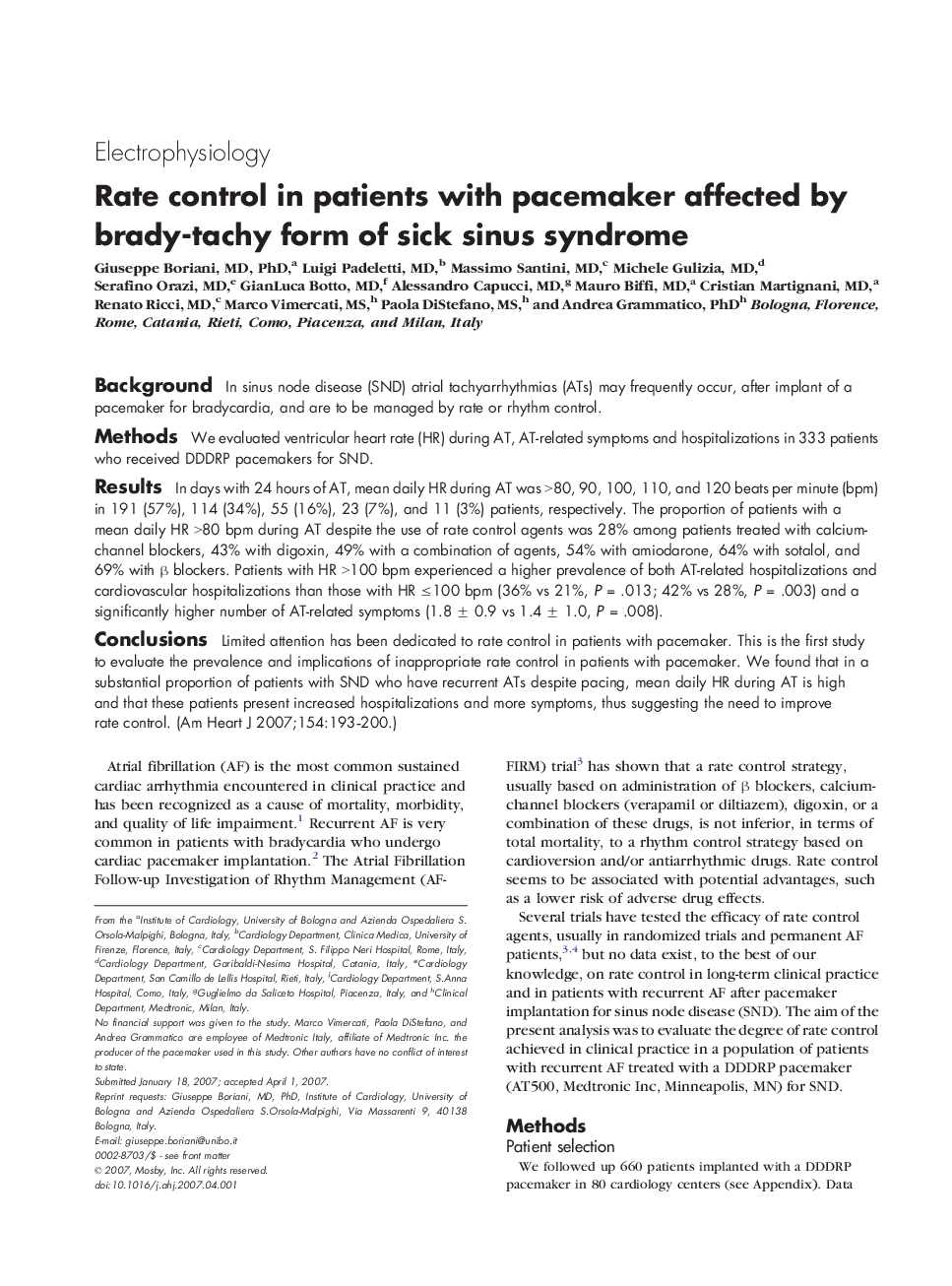| Article ID | Journal | Published Year | Pages | File Type |
|---|---|---|---|---|
| 2849164 | American Heart Journal | 2007 | 8 Pages |
BackgroundIn sinus node disease (SND) atrial tachyarrhythmias (ATs) may frequently occur, after implant of a pacemaker for bradycardia, and are to be managed by rate or rhythm control.MethodsWe evaluated ventricular heart rate (HR) during AT, AT-related symptoms and hospitalizations in 333 patients who received DDDRP pacemakers for SND.ResultsIn days with 24 hours of AT, mean daily HR during AT was >80, 90, 100, 110, and 120 beats per minute (bpm) in 191 (57%), 114 (34%), 55 (16%), 23 (7%), and 11 (3%) patients, respectively. The proportion of patients with a mean daily HR >80 bpm during AT despite the use of rate control agents was 28% among patients treated with calcium-channel blockers, 43% with digoxin, 49% with a combination of agents, 54% with amiodarone, 64% with sotalol, and 69% with β blockers. Patients with HR >100 bpm experienced a higher prevalence of both AT-related hospitalizations and cardiovascular hospitalizations than those with HR ≤100 bpm (36% vs 21%, P = .013; 42% vs 28%, P = .003) and a significantly higher number of AT-related symptoms (1.8 ± 0.9 vs 1.4 ± 1.0, P = .008).ConclusionsLimited attention has been dedicated to rate control in patients with pacemaker. This is the first study to evaluate the prevalence and implications of inappropriate rate control in patients with pacemaker. We found that in a substantial proportion of patients with SND who have recurrent ATs despite pacing, mean daily HR during AT is high and that these patients present increased hospitalizations and more symptoms, thus suggesting the need to improve rate control.
